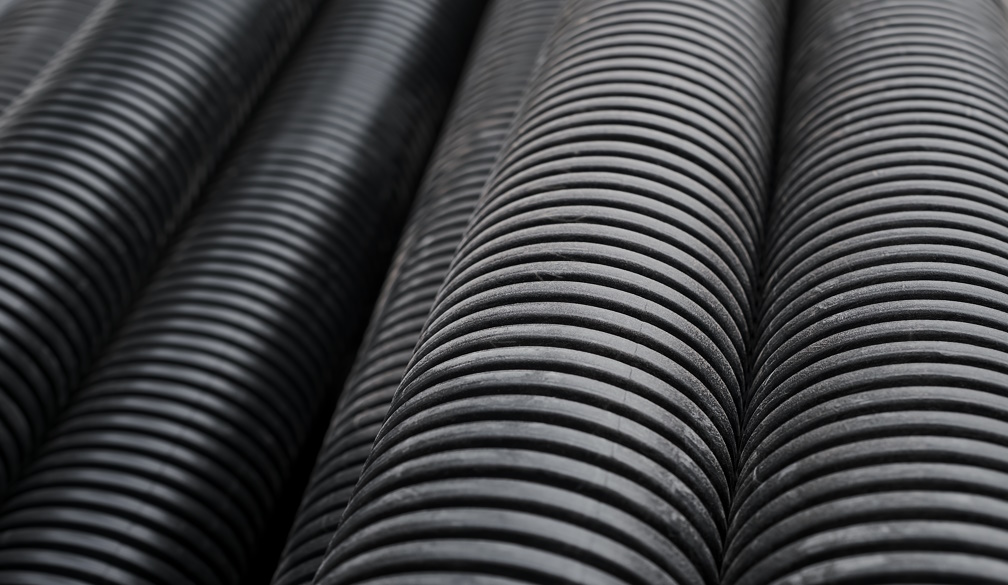Split Corrugated Conduit and Solar Conduit: Safe and Durable Cable Management Solutions

In modern electrical and solar installations, proper cable management is non-negotiable. Split corrugated conduit and solar conduit systems play a vital role in safeguarding cables, improving system lifespan, and complying with safety standards. Whether it’s a residential solar power setup or a commercial electrical installation, these conduits ensure reliable performance under harsh environmental conditions.
What is Split Corrugated Conduit?
Split corrugated conduit is a flexible, ribbed plastic tubing used to protect and organize electrical wires. Its split design allows for quick installation without the need to disconnect or modify the existing wiring. This makes it ideal for retrofits, upgrades, and maintenance tasks across various industries, including automotive, telecommunications, and home renovations.
The corrugated surface enhances flexibility and durability, helping the conduit withstand vibrations, pressure, and temperature fluctuations. It is also UV-resistant and flame-retardant, offering added protection in both indoor and outdoor settings.
Applications of Split Corrugated Conduit
This type of conduit is commonly used in areas where wires and cables are exposed to movement or require shielding from dust, moisture, or heat. In homes, it’s used behind entertainment units, inside walls, or in ceiling spaces. In vehicles and machinery, it protects wiring from friction and mechanical wear.
Electricians and data cabling professionals prefer split corrugated conduit for its ease of installation and reusability. It allows for quick access to wiring when upgrades or fault diagnosis is needed.
Benefits of Split Corrugated Conduit
Using split corrugated conduit offers multiple benefits:
Quick and tool-free installation
Excellent resistance to chemicals and abrasion
Flexibility for navigating tight or curved spaces
Reusability for temporary or adjustable installations
This conduit helps maintain the integrity of electrical systems by reducing the risk of electrical shorts, mechanical damage, or overheating due to tangled or exposed wires.
Understanding Solar Conduit in PV Installations
In solar energy systems, solar conduit refers to the piping used to house and protect the DC cables that connect solar panels to inverters and other system components. These cables carry high voltage and are often installed outdoors, exposed to sunlight, rain, dust, and temperature extremes.
Solar conduit is specifically designed to withstand harsh UV radiation, corrosion, and long-term exposure to outdoor conditions. It’s typically made of UV-stabilised PVC, HDPE, or metal. Some installations also use flexible conduit for easier routing.
Types of Solar Conduits Used in Australia
In Melbourne and across Australia, solar installations must meet strict electrical and fire safety standards. Common types of solar conduit include:
Rigid metal conduit (RMC) for high-impact protection
Liquid-tight flexible conduit for weather resistance
UV-rated PVC conduit for general outdoor use
These conduits are laid along roof structures, walls, and underground trenches to house solar panel cables safely and neatly.
Why Proper Conduit Installation Matters in Solar Systems
Without solar conduit, solar panel wiring would be vulnerable to UV damage, physical impact, and animal interference. Damaged or exposed wires can lead to performance loss, fire hazards, or even electric shock.
Professional solar installers use solar conduit to ensure compliance with Australian Standards (such as AS/NZS 5033) and reduce the risk of costly failures or safety violations. Proper conduit installation also improves the aesthetic finish of the solar system and makes maintenance easier.
Differences Between Split Corrugated and Solar Conduit
Although both conduit types protect cables, their design and applications differ significantly. Split corrugated conduit is more suited for internal or flexible environments where cables might need to be accessed or replaced frequently. In contrast, solar conduit is designed for more permanent, high-voltage outdoor installations.
Solar conduit is usually sealed, robust, and rigid to offer better mechanical and weather protection. Meanwhile, split corrugated conduit is often flexible and openable, making it more suitable for adaptable cable runs in less exposed areas.
When to Use Each Type of Conduit
Use split corrugated conduit when:
Retrofitting cables into existing systems
Routing wires through confined or curved spaces
Managing indoor or semi-exposed electrical wiring
Use solar conduit when:
Installing rooftop or ground-mounted solar systems
Running high-voltage DC cables outdoors
Complying with fire and electrical safety standards
Choosing the Right Conduit Supplier in Melbourne
Melbourne homeowners, solar installers, and electricians can source high-quality split corrugated conduit and solar conduit from reputable electrical wholesalers or solar component suppliers. Ensure that the conduit selected is rated for UV protection, fire resistance, and mechanical strength, based on the intended application.
Australian-compliant conduit products will feature markings or certifications confirming they meet local standards. Additionally, consider factors like internal diameter, colour coding, and compatibility with clips or mounting hardware during the selection process.
Conclusion: Safe and Efficient Cable Protection for All Projects
Both split corrugated conduit and solar conduit offer vital protection for electrical and solar systems. They support long-term system durability, improve safety, and streamline maintenance tasks. Whether you're working on a solar energy installation or managing an electrical upgrade, choosing the right conduit system is key to performance, safety, and compliance.

